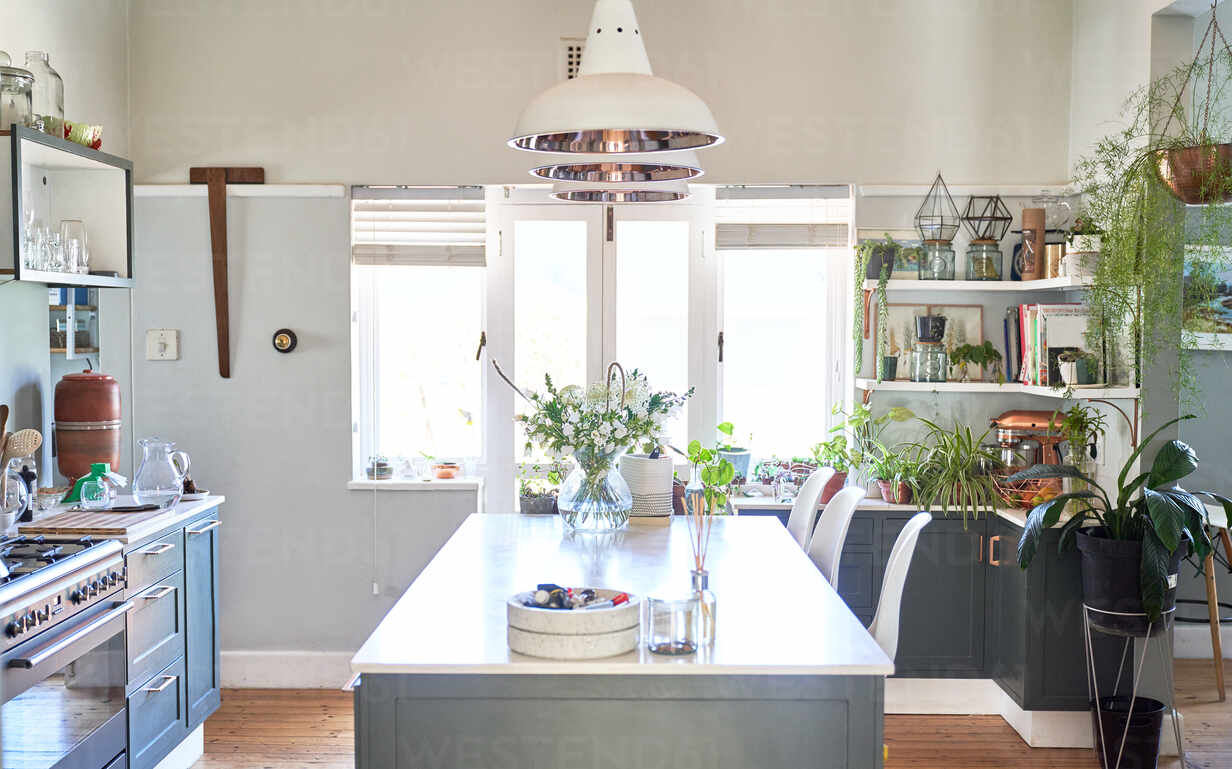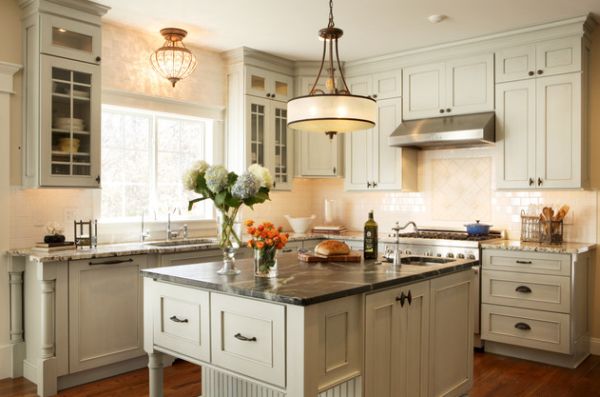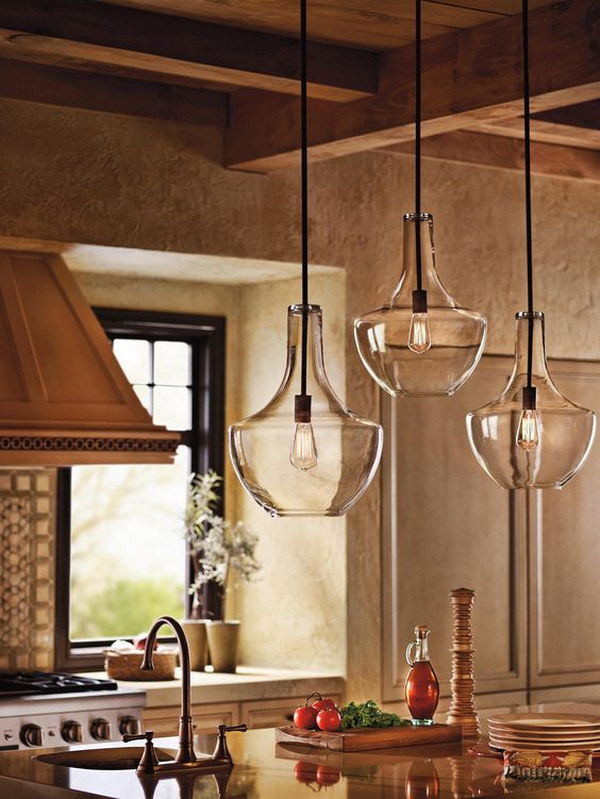When I was designing my kitchen, one of the most exciting elements was choosing the pendant lighting for the kitchen island. A kitchen island serves as both a functional workspace and a social hub, and the right lighting can enhance its usability and aesthetic appeal. Proper pendant light placement is essential not only for creating an ambiance but also for ensuring adequate illumination for tasks like food prep and dining. I quickly learned that pendant lights, when placed correctly, can become the focal point of the kitchen, providing both style and function. However, there are several factors to consider to get it just right.
The first thing I took into account was the size and shape of my kitchen island. Pendant lights come in various sizes, and the size of the island directly impacts how many pendants you should install and how they should be spaced. In my case, I opted for three medium-sized pendants because my island is long enough to accommodate multiple lights without looking crowded. If the island is smaller or narrower, fewer or smaller pendants might be more appropriate to maintain balance. It’s essential to measure the island’s dimensions and choose lights that will provide adequate coverage without overwhelming the space.
One rule of thumb I followed is to hang pendant lights about 30 to 36 inches above the surface of the island. This height ensures that the lights are neither too low to obstruct the view nor too high to provide effective lighting. I wanted to make sure the lights would illuminate the countertop while still allowing for comfortable conversation and line of sight across the kitchen. This height worked perfectly for my space, creating the right mix of functionality and style. Additionally, I made sure the lights were positioned about 12 to 18 inches inward from the edge of the island, ensuring the light would be focused on the work area.
Another crucial factor I considered was the number of pendant lights. The size of the kitchen island and the length of the room determined how many pendants I needed to install. The general rule is to allow about 24 to 30 inches of space between each pendant to avoid overcrowding. In my kitchen, three pendants, each spaced 30 inches apart, provided a balanced look without overwhelming the island. I found that too many lights can make the space feel cluttered, while too few lights might not provide enough illumination.

One of the decisions I spent a lot of time on was choosing the style of pendant lights. Since my kitchen has a modern design, I went with sleek, minimalistic pendants in a brushed nickel finish to complement the stainless steel appliances. The style of the pendant lights should match the overall aesthetic of the kitchen. Whether you prefer industrial, farmhouse, or contemporary styles, the pendants should enhance the overall design. I also considered the color temperature of the bulbs. Warmer tones created a cozy, inviting atmosphere, while cooler tones provided a more energetic and task-focused ambiance.
The material of the pendant light fixtures also played a big role in my decision-making process. Glass pendants are popular because they allow light to pass through easily, creating a soft, diffused glow. However, metal shades can create a more focused beam of light, which is great for task lighting but may create darker shadows in the surrounding area. I ended up choosing metal fixtures because they complemented the industrial elements in my kitchen and provided focused light directly onto the island. But in a kitchen with lighter, airier decor, glass fixtures could have been a better fit.

One of the considerations I didn’t initially think about was dimming functionality. Adding dimmer switches to my pendant lights was one of the best decisions I made during the installation process. A dimmer switch allows for flexibility in lighting levels, which is important for a multifunctional space like the kitchen island. I can increase the brightness for food preparation or lower it for more relaxed, intimate dinners or casual conversations. This level of control has been a game-changer in how I use the kitchen space, and I highly recommend it to anyone installing pendant lights.
The size of the pendants also matters in terms of proportion to the island and the rest of the kitchen. Larger pendants can make a bold statement, but if they’re too big for the space, they can dominate the room and feel out of place. On the other hand, smaller pendants can look lost if the kitchen island is large. In my case, I opted for medium-sized pendants that felt proportional to the size of the island and the room as a whole. I also considered the height of the ceiling—if the ceiling is high, you might need larger pendants or longer cords to create the right balance.
Lighting placement should also account for how the island is used. In my kitchen, the island serves multiple purposes: it’s a place for food prep, a dining area, and sometimes even a workspace. Because of this, I wanted to ensure the pendant lights provided enough light for each of these activities without being too harsh or too dim. If your island is primarily for food prep, task lighting is key, whereas if it’s more of a gathering spot for socializing, softer, ambient lighting might be more appropriate. The key is to strike a balance that suits the island’s multifunctional nature.

Another important consideration for pendant light placement is avoiding shadows. I realized that poorly placed lights can cast shadows on the countertop, which can be frustrating when you’re trying to chop vegetables or read a recipe. I made sure to place the pendants evenly across the island, ensuring that the light would cover the entire surface. This prevents dark spots and creates a more even distribution of light, making the space more functional.
In terms of installation, I highly recommend having a professional electrician handle the wiring and hanging of the pendant lights, especially if you’re dealing with multiple fixtures. While it might seem like a simple DIY project, getting the height and spacing just right can be tricky, and dealing with electrical work can be dangerous. In my case, hiring an electrician ensured that everything was installed safely and precisely, giving me peace of mind.
I also considered the ceiling type when determining the placement of the pendant lights. In homes with vaulted or sloped ceilings, pendants might need to be installed at an angle, or adjustable rods may be required to keep the lights level. My kitchen has a standard flat ceiling, so I didn’t have to worry about this, but it’s something to keep in mind if your kitchen ceiling has unique architectural features.

Choosing energy-efficient LED bulbs was another decision I made early on. Not only do they last longer than traditional incandescent bulbs, but they also consume less energy, which is better for both the environment and my energy bill. I opted for LED bulbs with a color temperature of around 2700 to 3000 Kelvin for a warm, inviting glow that still provides enough brightness for task lighting. Plus, LED bulbs don’t emit as much heat as other types of bulbs, which is a bonus in a kitchen setting.
Pendant lighting can also be a great way to add a pop of color or texture to the kitchen. While I chose neutral metal pendants, I’ve seen beautiful designs that incorporate bold colors or interesting materials like wood or woven rattan. If you want to make a statement, pendant lights can be a great way to introduce a design element that stands out. Just make sure that whatever you choose complements the rest of the kitchen’s color palette and doesn’t clash with other features like cabinetry or backsplash.
In terms of future-proofing, I made sure to choose pendant lights with adjustable cords or stems. This gives me the flexibility to change the height of the lights if needed, whether I decide to update the kitchen or rearrange the layout. It’s a small detail, but it offers flexibility and ensures that the lighting setup can evolve with the kitchen over time.
In the end, I found that proper pendant light placement involves a mix of design, functionality, and personal preference. The lights should be evenly spaced, hung at the correct height, and proportionate to the island and the room. The style of the pendants should complement the kitchen’s overall design, and the bulbs should provide the right kind of light for the island’s various uses. By considering these factors, I was able to create a well-lit, stylish kitchen space that’s perfect for both cooking and entertaining.

Common Mistakes to Avoid
One of the most common mistakes I see is hanging pendant lights too high or too low. If the lights are too high, they won’t provide adequate task lighting, and if they’re too low, they can obstruct views or become a head hazard.
Another mistake is choosing pendant lights that are too large or too small for the space. It’s crucial to get the scale right to avoid overpowering the room or making the lighting feel inadequate. Not using a dimmer switch is another mistake.
Dimmers add flexibility, allowing you to adjust the lighting for different activities. Lastly, improper spacing between lights can create uneven lighting, leaving parts of the island in shadows.

How high should pendant lights be hung above a kitchen island?
The ideal height for pendant lights above a kitchen island is about 30 to 36 inches from the surface of the island to the bottom of the light fixture. This height ensures that the lights provide effective illumination without obstructing the view across the kitchen. I found this to be a good rule of thumb in my kitchen, as it offers the right balance between functionality and aesthetics.
How many pendant lights should I hang over my kitchen island?
The number of pendant lights depends on the size of your island and the size of the pendants themselves. A good rule is to space pendants about 24 to 30 inches apart. For smaller islands, two pendants might suffice, while larger islands may require three or more. I opted for three medium-sized pendants in my kitchen to provide even lighting across the entire island without overcrowding the space.
What is the best size for pendant lights over a kitchen island?
Pendant light size should be proportionate to the size of the island and the height of the ceiling. Larger pendants can make a bold statement but may overwhelm a small island. In contrast, small pendants can look out of place on a large island. I chose medium-sized pendants for my kitchen, which struck the perfect balance between being decorative and functional.

Should I use a dimmer switch for my pendant lights?
Yes, I highly recommend using a dimmer switch for pendant lights over a kitchen island. Dimmers allow you to adjust the brightness to suit different activities, from food prep to dining or casual conversations. It’s a simple addition that makes a big difference in creating a versatile lighting environment. I found this particularly useful in my kitchen, as it allows me to create different moods depending on the time of day.
What type of bulbs should I use in my pendant lights?
LED bulbs are an excellent choice for pendant lights because they are energy-efficient, long-lasting, and available in various color temperatures. I chose warm white LEDs (around 2700-3000K) for a cozy, inviting glow in my kitchen. LEDs also emit less heat than incandescent bulbs, which is particularly beneficial in a space like a kitchen where heat can be an issue.
Can pendant lights be used in kitchens with high ceilings?
Yes, pendant lights can be used in kitchens with high ceilings, but you may need to choose fixtures with longer cords or stems to ensure they hang at the correct height above the island. In my kitchen, which has a standard ceiling height, I didn’t have this issue, but in a kitchen with vaulted ceilings, adjustable pendants would be necessary to create the right balance.

Related Posts:
- Under Cabinet Kitchen Light Fittings
- Spotlight Kitchen Lights
- 4 Ft Fluorescent Light Fixture Kitchen
- Kitchen Light Box Upgrade
- Kitchen Cabinet Lights Battery
- Rectangular Kitchen Island Lighting
- Country Kitchen Light Wheat Bread
- Kitchen Strip Light Fittings
- Update Fluorescent Light Fixture Kitchen
- Kitchen And Dining Room Lighting Ideas
